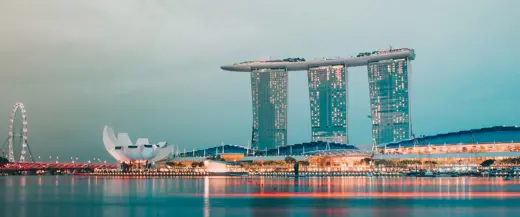Mr. Menon commented that over the last three decades, the number of registered severe weather events has tripled. Over the last two decades, the rate of increase in sea levels has doubled. Over the last decade, the pace of ice loss in the Arctic and Antarctic has tripled. This year, wildfires and heatwaves of unprecedented ferocity have swept across Europe, North America, and Australia, while record rainfall in countries ranging from India to America have caused devastating floods. Climate change is happening at a faster pace than predicted by early climate models and therefore global greenhouse gas emissions must reach net zero around 2050.
He further noted that the world is currently far from a net zero emissions trajectory. Global greenhouse gas emissions must peak by 2025 and come down by about 45% by 2030 relative to 2019 levels. Even if all countries follow through on commitments made in the Paris accords, carbon emissions will come down by just 7.5% by 2030. According to the Intergovernmental Panel on Climate Change ("IPCC"), to fall back below the 1.5 degrees Celsius target, it would be necessary to remove from the atmosphere a decade or two of carbon emissions.
Time presents a significant challenge for de-carbonization. 2020 to 2030 is the critical decade for climate action. Net zero commitments for 2050 are prevalent, however few countries have credible plans to meet them, lacking any form of credibility or accountability to achieving these targets. There should also be transparency in the cost of decarbonization.
According to Mr. Menon, getting to net zero will not be easy and will require five transformative changes:
- a price on carbon;
- a shift to cleaner energy;
- a greening of the economy;
- a pivot to transition finance; and
- a sustainable lifestyle.
Mr. Menon stated: “Singapore is firmly committed to doing its part in the global effort to reduce greenhouse gas emissions. Last year, the government launched the Singapore Green Plan, which sets out a road map towards sustainable development, a green economy, and net zero emissions. Singapore aims to peak carbon emissions around 2030 and to achieve net zero by or around mid-century. If anything, the direction of travel in the coming years can only be towards greater climate ambition, not less.”







